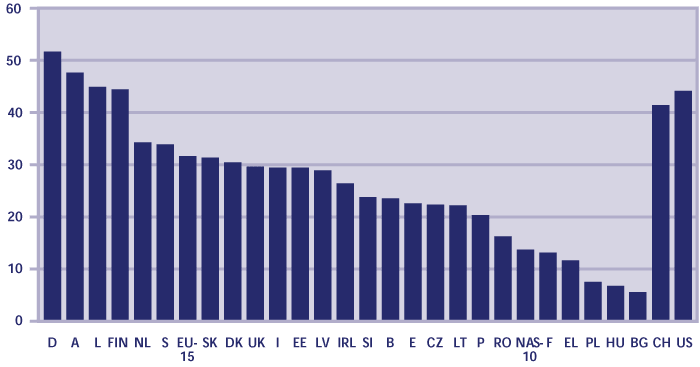
Statistical Indicators
Benchmarking the Information Society
- Statistics & indicators -
Share of employed population who participate in work-related self-learning

Base: Labour force, weighted column percentages
Questions: C14a, C14b
Sources: SIBIS GPS 2002, SIBIS GPS-NAS 2003
Self-directed learning is an important means to acquire work-related skills, as it can be better adapted to individual skill requirements and time schedules than formal training courses. In most countries, a significantly higher share engage themselves in work-related self-directed learning than in training provided by outside organisations (such as further training courses). Learning that is not work-related is excluded since it cannot be distinguished satisfyingly from other leisure activities. Additional data would be needed to give information about the intensity of such learning activities. Self-learning defined as such is most popular in Germany (52% of the labour force), Austria (48%), Luxembourg (45%), the US and Finland (both 44%). Among the candidate countries from Central and Eastern Europe, Slovakia, Estonia and Latvia show the highest rates with roughly 30%of the labour force engaged in work-related self-learning.